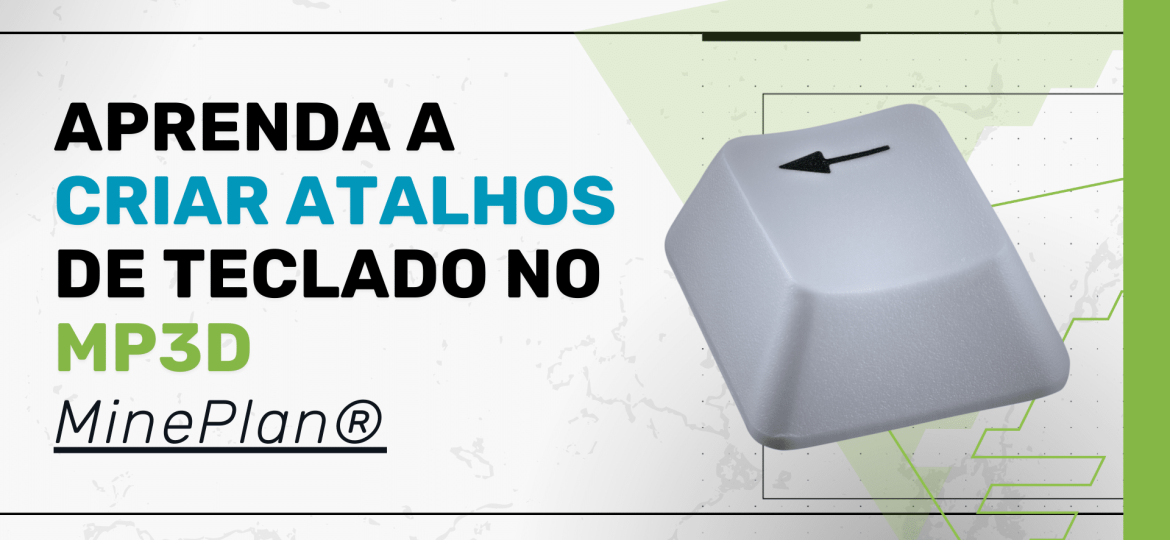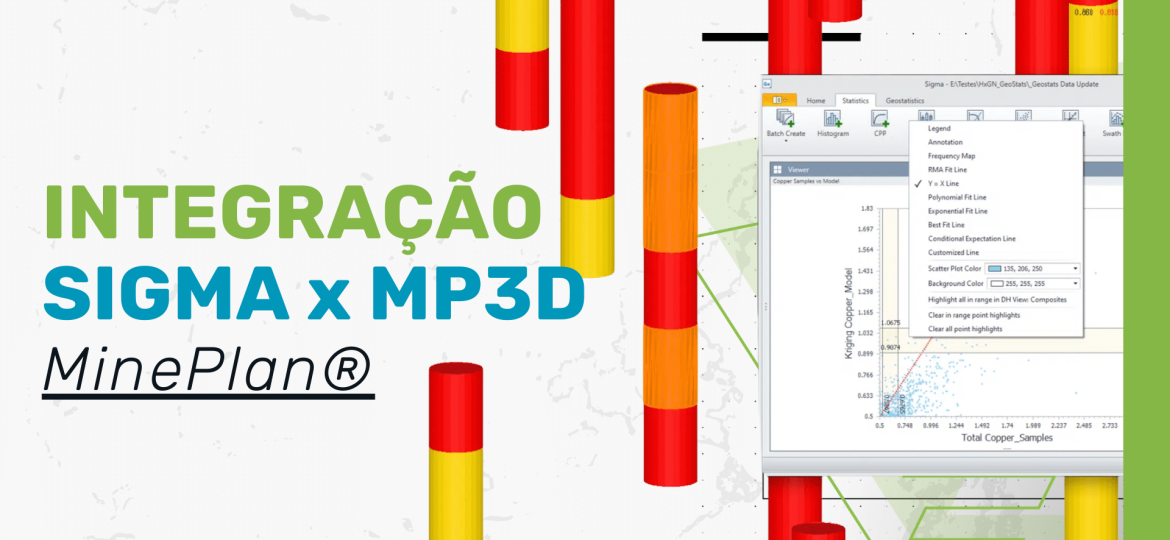Vein modeling is a common subject in mining. Ore occurs associated with veins and domain constraint interpolations are required to maintain grade continuity. Using traditional modeling techniques, you can spend days or weeks manually editing the data and sketching lines. This can cause some problems, such as:
1 – Produce a single model for the warehouse.
2 – The model often represents the interpretation of data made by only one person.
3 – It can be challenging to replicate or repeat the process as new data becomes available.
4 – It is usually done after the survey, rather than during the survey. Being done during drilling, the modeling allows the geologist to analyze the results and adjust the drilling campaign, whenever necessary.
In previous editions of our Tips & Tricks, we've shown how Implicit Modeling speeds up the overall geological modeling process. However, for implicit modeling to work, the data must be in the correct format (you must be able to select touchpoints within the dataset). In a situation where geology occurs in the form of stratigraphic layers with intrusions, the geologist will usually directly describe the rock types along the hole, allowing MineSight Implicit Modeler to locate these contact points and build a surface or solid. The modeling of veins is more complicated, as they are not differentiated from each other, at least not initially in the field. Instead, the geologist will just describe the lithology of the vein contained in the chips or a cut of the core.

Figure 1: Dataset showing multiple veins (in red) intruding the host rock.
If we were manually modeling the veins in the section, the process of interpreting the vein would be more coherent. Geologists, based on their knowledge and experience of the deposit, use their visual perception to line up holes and draw polygons around them to “join” them.

Figure 2: Manual polygons constructed in 2D section around the intercepts of the veins.
However, if we use implicit modeling for this, it would not be coherent, as the computer does not determine which intercept relates to which came. Until now, the process of converting differential shaft codes has been very time consuming, requiring data manipulation in MineSight 3D and MineSight Torque.
A new MineSight utility version 11.50 is ready to make the job of geologists much simpler. O Drillhole Paintbrush Tool allows you to modify or add an integer numeric code to an attribute in the Torque Drillhole database by manually “painting” over the intercepts on the screen using the mouse cursor. O Drillhole Paintbrush Tool works in 3D and 2D.
This is a careful and highly recommended action so that users can add a new attribute to their Torque database specifically for this purpose, keeping the original remarks. O Drillhole Paintbrush Tool allows multiple users to make their own attributes, their own encoding and modeling of the veins, and compare their results quickly. The tool also supports text-type attributes allowing geologists to flag ranges with comments or notes, making the Drillhole Paintbrush Tool an excellent 3D collaboration tool.
In the example below, a new attribute called PAINT was created to store the codes of the veins, while the log original was stored in an attribute called LITH. It is convenient to have two drillhole views open for the same dataset, being a view set to show the original LITH codes and the other to show PAINT codes. THE LITH view shows the properties that are optimized so that the shaft code stands out (in red) from the other codes. Adjusting the orientation of viewer 3D along the trim, it is important in this example to note how the paint will be applied to all intercepts behind the mouse cursor (for the tool's 3D mode only). The example dataset is reasonably complex with five distinct veins that spread out in the plane and section from a common point.

Figure 3: view along the trim of the LITH code with annotation showing the five distinct veins.
configure the Drillhole Paintbrush Tool is easy. He requires a Drillhole View to display and highlight an attribute to code and, along with the integer numeric code, assign a brush width. You can modify the brush width while marking, but it is recommended that you understand the range width of your data and use an appropriate brush. Smaller can be better!
Finally, define a Interval Filter. In this example, we want to determine a PAINT view equal to the LITH view, where the latter represents the vein, otherwise you will be painting outside the lines. The next step is to click on PAINT and color with the mouse cursor on the intercepts you want to encode. Holding down the Shift key will act as an eraser.

Figure 4: Configuration of the Drillhole Paintbrush Tool.
Once you've finished marking, right click and press save. You will be asked to confirm that you want to write your results back to Torque (note that the Drillhole Paintbrush Tool respects Torque's user permissions). Turn off LITH object visibility drillhole view and update the PAINT drillhole view to see the new encoding:

Figure 5: (a) Result for Shaft 1 encoded and (b) Encoded results for all five shafts.
Repeat the previous steps for each shaft until all shafts have been coded.
After that, it's time for validation. You can create a report from Torque or quickly create a model surface implicit in each shaft code. Bumps on the surfaces will highlight problems with the coding very quickly.

Figure 6: (a) Resulting intermediate surfaces generated from the IM. Note that the bulges on shafts 2 and 3 are related to wrong coding. (b) Intermediate surfaces resulting from veins produced with MineSight Implicit Modeler. Note that shaft 5 intersects shaft 4: this is a classic example of bifurcation.
Zoom in on all areas that need marking and edit the codes using the Drillhole Paintbrush Tool. Then run the implicit model again. In a few minutes you should get a good representation of the veins. The data is now ready for more detailed vein modeling.
A more advanced use of the tool paintbrush is related to bifurcation scenarios, as demonstrated in veins 4 and 5. It is possible to use the paintbrush to assign multiple shaft codes to a single range – using multiple attributes – and model with the appropriate code. This will allow the two surfaces to come together seamlessly and later matched or intercepted.
Later this year, a new product called GeoLogic will allow you to leverage the power of MineSight Implicit Modeler through sequencing surfaces and solids to create a closed geological model. The result is an auditable and fully reproducible geological model. This model can be quickly updated with new information and, in this case, new coded vein interpretation decisions.
For more information about Implicit Modeling and these new features, contact client-relations@prominas.net that we will be delighted to serve you.
To the next!!!




